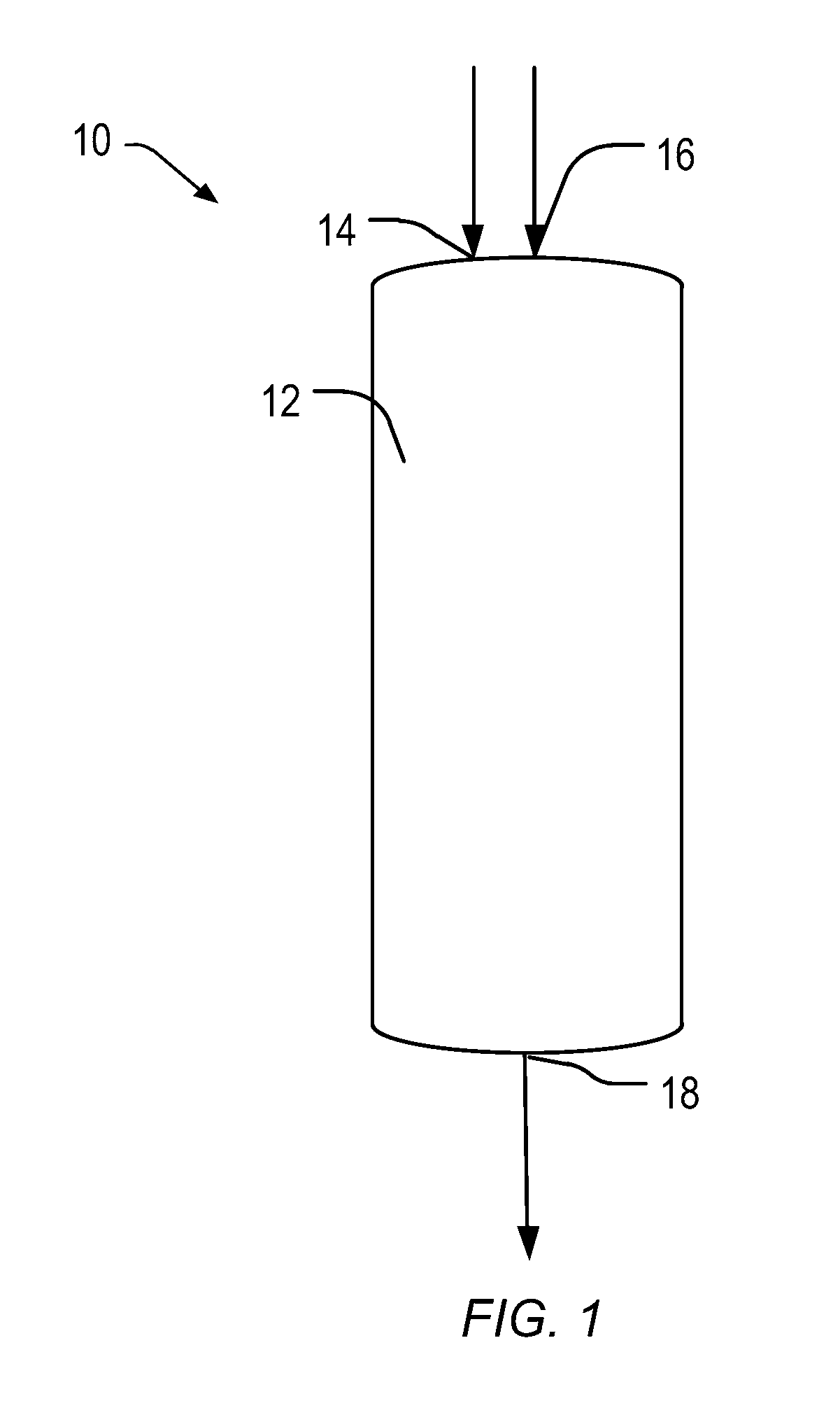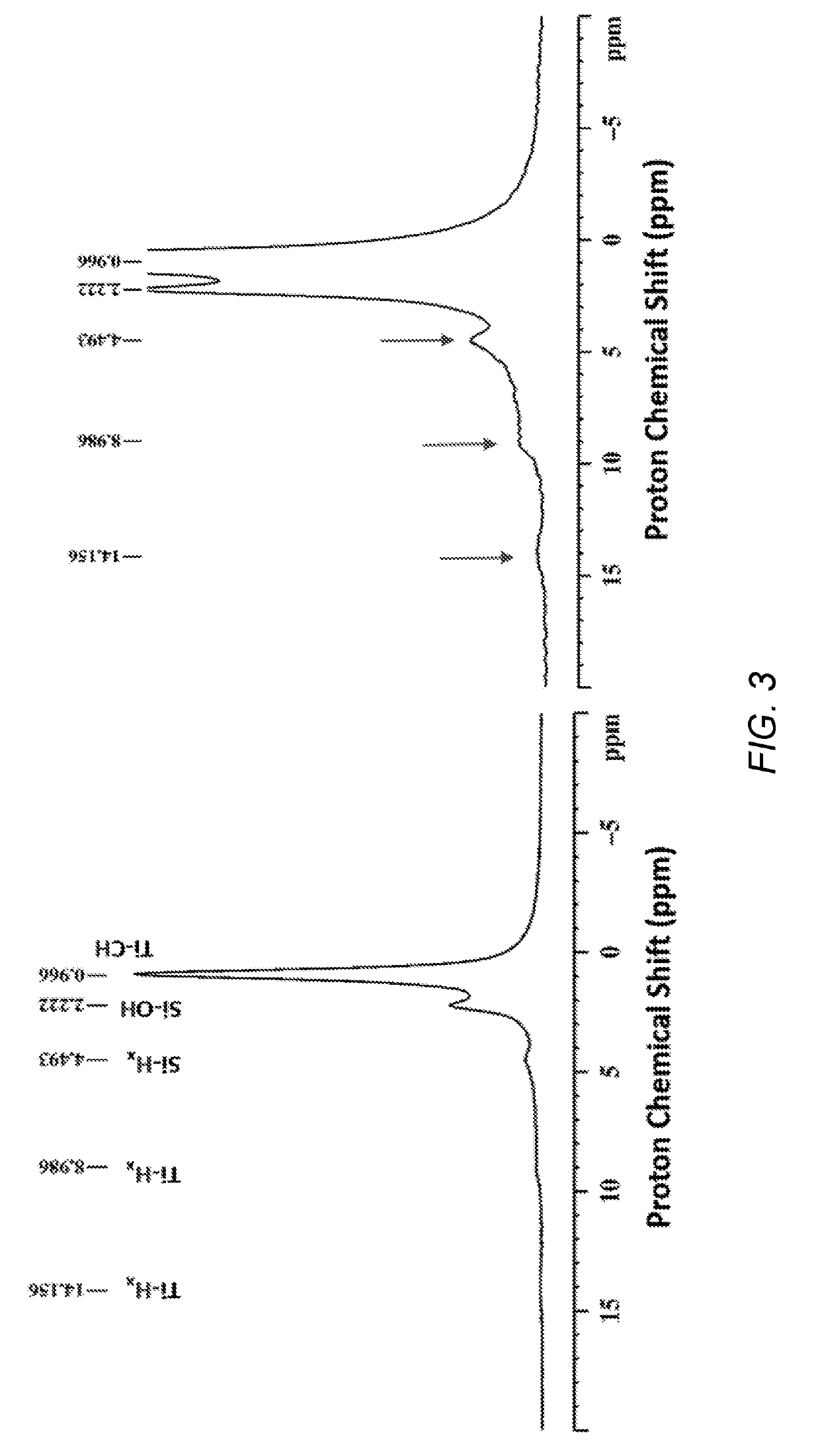Heterogeneous catalysts/process based on supported/grafted transition metal hydrides for ammonia formation from nitrogen and hydrogen
- Summary
- Abstract
- Description
- Claims
- Application Information
AI Technical Summary
Benefits of technology
Problems solved by technology
Method used
Image
Examples
example 1
(Preparation of Neopentyl Lithium (LiCH2CMe3))
[0075]Neopentyl lithium was prepared by reacting neopentyl chloride (10 g) and finely chopped Li wire (3 g, 1% Na) in hexane according to Davidson et al., (Organomet. Chem. 1973, 57, 269) to afford 5-6 g of neopentyl lithium (70-80% yield).
example 2
(Preparation of Tetraneopentyltitanium, TiNp4 or [Ti(CH2CMe3)4])
[0076]To a solution of neopentyllithium in pentane (50 mL of a 0.65 M solution, 32.5 mmol) was added Ti(OEt)4 (1.5 mL, 7.3 mmol) in pentane (20 mL). The reaction mixture was stirred for 1.5 h at −78° C. and then for 6 h at room temperature. The solvent was then removed to obtain the brown solid which was purified by sublimation (55° C., 10−3 Torr) over 10 h to give the product according to Clark et al., J. Am. Chem. Soc., 1978, 100, 6774 and McCullough et al., J. Am. Chem. Soc., 1985, 107, 5987.
example 3
(Preparation of Active Complex Hydride [(≡Si—O)xTiHy])
[0077]A mixture of Ti(Np)4 / [Ti(CH2CMe3)4] (0.1 g, 0.3 mmol) in pentane (10 ml) and SiO2-(700, ≡SiOH) (1 g, 0.3 mmol of SiOH) was stirred at 25° C. for 3 h in a double schlenk with a small pore silica frit. After filtration the solid was washed three times with pentane and dried for 15 min under vacuum at 25° C. to produce surface complex (≡SiO)Ti—Np3. FIG. 2 is a reaction schematic showing the preparation of the surface complex and the catalysis of ammonia production from nitrogen and hydrogen gases. Referring to FIG. 2, ≡SiOH 22 is reacted with Ti(Np)4 to form surface complex 24 ((≡SiO)Ti—Np3). Surface complex 24 is treated with hydrogen gas to form supported metal hydride 26 of the present invention. Supported metal hydride 26 can be reacted with N2 and H2 under conditions suitable to produce ammonia gas and absorbed ammonia on the surface support
[0078]Anhydrous H2 (1 bar) and the surface complex (≡SiO)Ti—Np3 (0.3 g, 0.056 mmol...
PUM
| Property | Measurement | Unit |
|---|---|---|
| Temperature | aaaaa | aaaaa |
| Temperature | aaaaa | aaaaa |
| Temperature | aaaaa | aaaaa |
Abstract
Description
Claims
Application Information
 Login to View More
Login to View More - R&D
- Intellectual Property
- Life Sciences
- Materials
- Tech Scout
- Unparalleled Data Quality
- Higher Quality Content
- 60% Fewer Hallucinations
Browse by: Latest US Patents, China's latest patents, Technical Efficacy Thesaurus, Application Domain, Technology Topic, Popular Technical Reports.
© 2025 PatSnap. All rights reserved.Legal|Privacy policy|Modern Slavery Act Transparency Statement|Sitemap|About US| Contact US: help@patsnap.com



